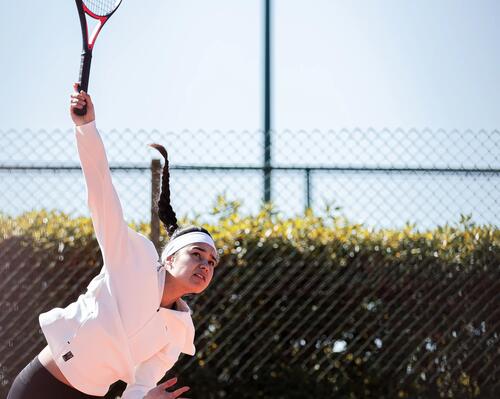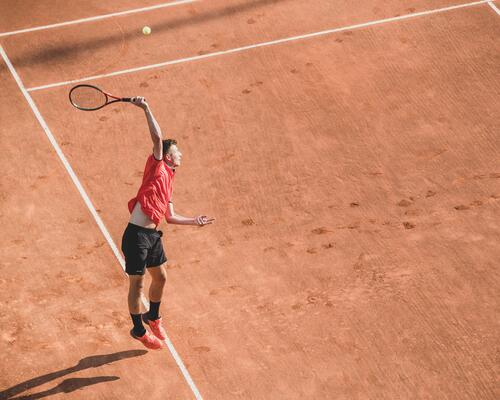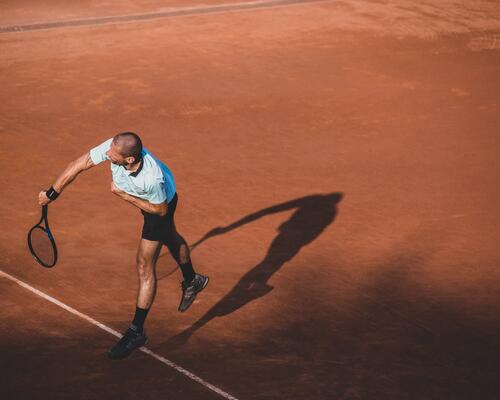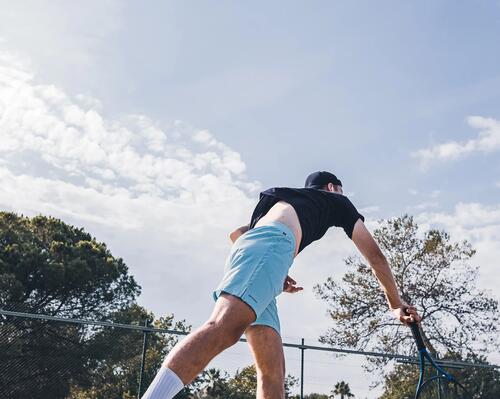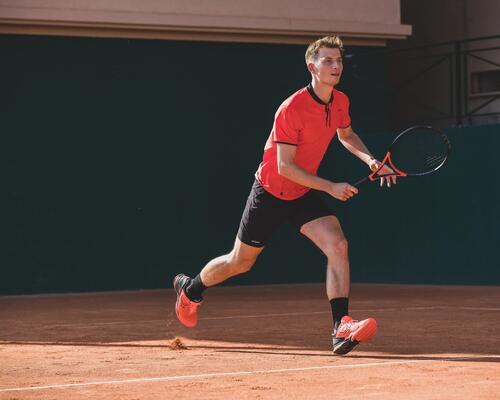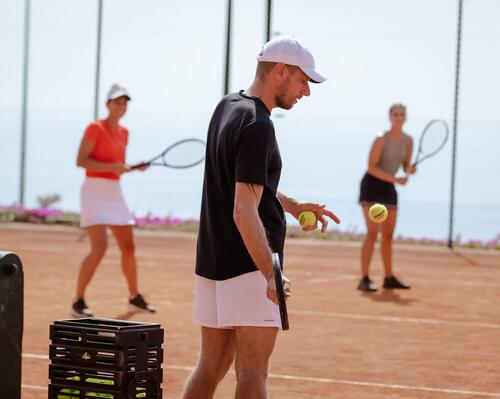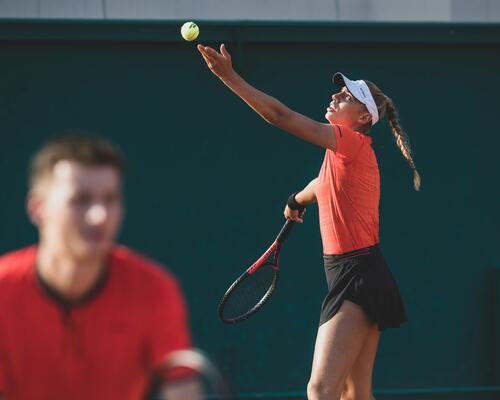Legs
Why are your legs so important for an accurate serve?
Your legs are a bit like your serve's metronome.
You can't do a good serve without pushing forwards and upwards with your legs. This drive will determine not only your serve's power and spin quality, but also its precision!
Yep, it's not just your arm that dictates the precision of your serve. To be as accurate as possible, you'll need to drive up and forwards, in particular in the direction that you want the ball to go!
If you do a kick serve to the outside, your body and your drive need to follow through towards the outside.


